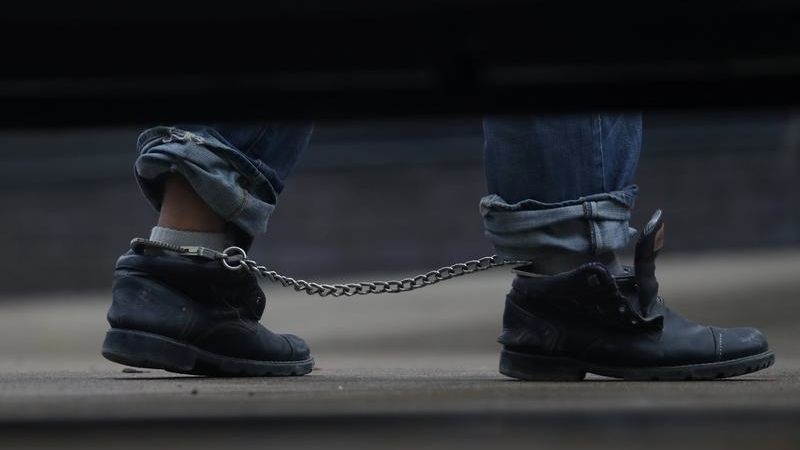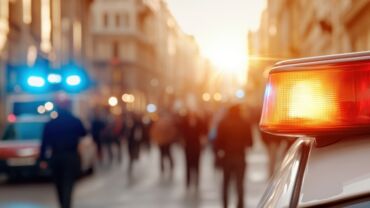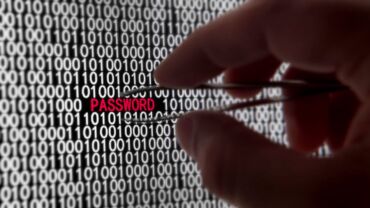From considering how to protect incarcerated individuals to enforcing quarantine orders, courts have played a significant role in the COVID-19 emergency, Chief Justice Nathan Hecht of the Supreme Court of Texas explained April 9 in a conversation with Thomson Reuters.
Although the pandemic is a temporary situation, it will likely have lasting impacts on the judicial system, Chief Justice Hecht said.
The interview has been edited for clarity and brevity.
TR: What sort of emergency planning did the Texas court system have before this pandemic?
NH: We have a continuity-of-operations plan. I think most states do. It’s pretty general, but it’s serviceable for the courts.
Texas is a big court system. We have over 3,200 judges, and we have about 750 general jurisdiction judges. We have 802 justices of the peace; we have over 1,300 municipal court judges. Then we have a judge who runs each of our 254 counties.
We have varying degrees of internet connectivity. Every county has connectivity, but in rural areas it’s often satellite and of course in the more urban areas it’s strong.
So we have a “coop” plan, and then we have a couple of statutes for emergencies. There’s a state statute that allows the Supreme Court of Texas to alter procedures and deadlines in the court system.
There’s a general chapter in the Government Code that allows the governor to do very sweeping things during a disaster.
Both of these have been used in the past. We have the Supreme Court statute as result of hurricanes a decade ago and we used it in Hurricane Harvey. Harvey was kind of our training for what’s happening now.
In Harvey, the courts in the Gulf region learned how to use these procedural adjustments to cope with the consequences of the storm.
Nationally, as I said, I think most states have coop plans. But some states rarely have anything approaching a disaster. A few do. Obviously along storm corridors they do.
After Harvey and Irma and a couple of other storms, the Legal Services Corporation put together a disaster relief task force. They got people from all over the country to meet together and come up with ways that courts and the legal profession can respond to these kinds of disasters.
When we first heard the word “coronavirus” on New Year’s Eve, the courts of the United States had coop plans, some resources, some experience, things like the LSC disaster relief plan, and maybe then some local plans like in Houston, which gets hit all the time, and New Orleans.
That was where we were when in early March we began to see that this was going to be a terrible disaster and we were going to have to react at very fundamental levels.
TR: One of the things that Mary [McQueen, president of the National Center for State Courts] mentioned was the fact that some judges in Texas have been specifically designated as the quarantine enforcers. Can you talk about that process?
NH: In the very early stages, about the first of March, we began to anticipate — working on this almost 24 hours a day — “What are we going to need to be ready for this?”
One thing that we knew from former disease scares was that if some sort of quarantine is ordered, there may be people who will resist.
We have a statute in Texas, and most states have a similar statute, that says if certain people in the state determine that somebody, an individual person should be quarantined, and the person refuses to do it, you can go to court and get an order involuntarily detaining the person.
But, thanks be to God, we don’t ever have to use it, so nobody really knows that it’s there. There are obvious constitutional limitations on it, there are a lot of due process protections that are built in, but none of the judges had ever seen the statute before.
What’s going to happen if we have a bunch of these cases come up? Law enforcement or health officials can go to court and get an order — it’s going to be in the middle of the night, on weekends, some inconvenient time — it’s going to be hard to get into the courthouse, they’re going to have to go find a judge. The judge is not going to know what in the world you’re talking about. You’re going to be at a total loss.
So we decided we would ask for volunteers. We had 31 judges who volunteered. They agreed to be available to hear involuntary quarantine cases, day or night, whenever one came up.
They’re scattered all over the state, from one end to the other. It’s a pretty demographically balanced group, some of our exceptional judges, judges who really wanted to take on the extra duty.
We got the University of Houston Law Center to host a webinar on this statute and how to apply it. The judges all got trained, and then we made their identities known at the Office of Court Administration and told law enforcement people, “This is who you call.”
We set up a process where you could get to a judge almost anywhere in the state within an hour or two at the very most, and in some parts, within a few minutes.
We’ve had a couple of cases already. I think most cases were homeless people because, for the most part, people are going to want treatment and want to stay away from their families.
It was a process that worked really well to hear those cases.
TR: We’ve seen that some of the stay-at-home orders issued by governors have started getting challenged in court. Do you think any of the changes to operations that the courts have implemented will be challenged?
NH: I doubt it. There weren’t any challenges in the wake of Harvey. And the operational modifications were along the lines of what we’re doing now; for example, we suspended the statute of limitations.
There might be a defendant who complains that we didn’t have the authority to do that, but nobody said so after Harvey. This time, we allowed trial judges to suspend the statute of limitations, but we didn’t require them to.
A big group of plaintiffs’ lawyers, defense lawyers, trial lawyers, ABOTA [American Board of Trial Advocates], state bar leadership, local bar leadership wrote a letter to the court that said, “We need a date certain. We can’t take the risk that a district judge could suspend the statute of limitations but won’t.”
We suspended the statute of limitations from March 13, when our first orders went out, to June 1.
TR: Some of the initial responses were sort of done at the local level and then as we learned more about this virus and the way it’s transmitted, I think there was more of a centralized response. It seems that maybe some of the other stakeholders involved — like you just mentioned, the letter that was written to you — sort of influenced taking a more centralized approach. Is that how that worked?
NH: Our first order on March 13 said judges in the state can suspend any procedure or deadline and must do so to protect people’s health.
Our thinking at the time was, “This is hitting everybody differently. It’s hitting people in Houston differently from Lubbock, differently from the valley, differently from East Texas, and we should give judges flexibility to handle it.”
I don’t know if that was the right approach or not, but it didn’t work very well, because right out of the box the reaction in some quarters was, “You know, this is going to be over one of these days, and we need to just get through it, business as usual.”
Then there were places where people were saying, “Oh no, we need to close down.”
The system was not going to tolerate that disparity very well. That’s when we began issuing orders that had general application, like the statute of limitations order, rather than leaving a modification up to the individual trial judge.
But also, there are all kinds of little problems that come up and just upset people’s lives that you might not anticipate.
For example, almost every child custody order in the state says that one parent gets the child during spring break. And it uses those words, “during spring break.”
Well, the schools, the first thing they do is announce that spring break’s not going to be the same.
Some of them say “When spring break is over, don’t come back,” and some of them say “Spring break has been extended.”
Parents in the latter districts said, “Well, usually I get the kid for a week, but since spring break’s been extended, I get the kid till spring break is over.”
That was something that needed to be addressed on a general, not discretionary, basis.
We had judges who were trying to go forward with hearings in courtrooms because they thought they should go ahead in the face of adversity and keep doing their job.
Meanwhile, you’ve got the governor and mayors saying, “No, you can’t do that anymore.”
So we put out general orders that said you must not conduct hearings in person if the result is to violate social-distancing restrictions or group-size restrictions.
Should we have done that right off the bat? In hindsight, maybe we should have. On the other hand, maybe it was better for people to kind of feel their way along rather than have somebody on high tell them what to do.
Texas is a very non-unified judiciary. Every judge is king or queen of his or her own courtroom, and there’s not much administrative hierarchy.
New York, on the other hand, is just exactly the opposite. It has very strong centralized administration. Chief Judge Janet DiFiore up there has done a fabulous job with enormous obstacles. She’s done it all from the top down because that’s the way their system works.
So we come at it from different places. But I think we all got pretty much to the same end at the same time.
TR: You’re not only experiencing this as one of the leaders in the Texas judicial system, but you’re also a chair of the rapid response team for courts nationally. How is that experience going?
NH: Well, it’s hard. There’s a national Conference of Chief Justices that has 58 members, who are the highest-ranking judicial officers in every state, the District of Columbia, and the territories.
Then there’s the Conference of State Court Administrators, called COSCA, and it’s the highest-ranking court administrator in those jurisdictions.
The two operate in tandem, and we’re both supported by the National Center for State Courts.
When this first hit, the states were reacting in different ways. The states that had done this before — California, New York, Florida, Texas, for example — they were pretty quick on the draw to come out with administrative orders that were trying to keep the courts operating.
But a lot of states [that] had not faced this before, or at least not seriously, were asking for help.
The National Center already had a pandemic webpage going, so right away they started expanding that and encouraging the chiefs and court administrators to send in all of their pandemic orders, so they could classify them and put them on the webpage.
If you were a state and you wanted to know what courts were doing about residential evictions, for example, you could go on the webpage, look for that, see all the states that had done something, what they’d done, and it could really be a help.
That lasted about a day. Stuff was pouring in so heavily that we began to think, “You know, we’re going to have to be, to use Judge DiFiore’s word, ‘nimble.’”
We put together a rapid response team of me; Judge DiFiore; Judge Mary Ellen Barbera in Maryland, because she’s the chair of our CCJ emergency committee; Joe Baxter, who’s the chief court administrator in Rhode Island and president of COSCA this year; David Slayton here in Texas; and Corey Steel out in Nebraska, because they have done some administrative training for disasters out there.
We did a webinar right off the bat that we invited the chiefs and COSCA members to attend.
We had pretty much everybody in the webinar, and we were just talking about the different approaches that we had taken in response, like New York was having to close down, physically, most of their courthouses. Texas was not, but we were limiting what was going on in them.
We got a lot of questions from that and then we’ve done several since. We’re meeting as needed, which is at least once a week.
We did a big webinar earlier this week on videoconferencing. David Slayton is kind of an expert on that. They had a webinar for judges and court administrators to see how this works that was heavily attended.
Three weeks ago, I’d never heard the word “zoom,” other than hurrying down the street. As of last Friday, Texas judges had held 2,000 hearings on Zoom, involving 14,000 participants.
Our court had oral argument on Zoom yesterday, the Ohio Supreme Court the day before, other high courts before us, and many have remote arguments scheduled. Other appellate courts are looking at it. Trial courts are using it all the time.
It’s not hard, but it’s harder for some people who are not very tech-savvy.
These webinars take you by the hand, show you how to do it, tell administrators, “This is how you set it up with the parties and the lawyers. This is how you open hearings and close them.”
That’s working pretty well, and the American justice system will never be the same.
TR: There have been some recent revelations about potential security vulnerabilities in Zoom, and I’m sure they exist in other platforms as well. Have you received any feedback from courts using Zoom that they’ve experienced “Zoom-bombing” or anything like that?
NH: No. Our office of court administration’s been following all that. The likelihood of trouble from any kind of problem like that in trial court hearings is pretty low because they’re public anyway.
Unless you’re talking about the welfare of a child or somebody’s disease or something, and you have to go off the record or go back in chambers, most of the time it’s going to be public. If people come in and crash the meeting, as it were, it’s probably not going to hurt anything.
If you’re deliberating, as a collegial court would, then you have to worry about it more. But we’ve been persuaded, in Texas, that the security problems are unlikely and that they are due mostly to the evolution of Zoom and other platforms, which started just as social networking.
I think as they move toward more of a business application, the privacy tools that are built into the platforms prevent all the problems, but we’ll see.
There are ways to set up the meeting so that the people coming in can be limited, what they can do while they’re there is limited, there’s no recordings of it unless you want one.
TR: The trainings that you’re providing must be really helpful then to get everyone acclimated to using the right settings and understanding the options.
NH: Yeah. They say, “Click here. If this box isn’t checked, you need to check it, so you’ll have this additional protection.”
TR: Moving on from what’s going on right now in response mode, how do you envision the post-pandemic world, as far as courts go? How are courts going to reopen?
NH: Well, we’ve been working on that in earnest for the last few days. We were just trying to make sure we had a grip on managing the current situation.
I think people are in a good, strong management mode, and either have settled into an operation or are moving that way or know where they can get help, so I think we’re beginning to stabilize.
On the back end, we’re very troubled. First is just the overwhelming dockets that we’re going to have. I don’t think a court in the country has tried a jury case since mid-March, and they’re not going to until probably mid-May and maybe mid-June, and maybe after that.
We’ve got all these cases, the most important ones are criminal cases, that are just stacking up. That’s impacting jail populations and different jurisdictions are worrying about what to do about that, some with more success, some with less.
Michigan, for example, really attacked the jail population problem several weeks ago. They started several months ago, before the pandemic, they were just worried about it. Chief Justice Bridget McCormack and others have been very successful in reducing and controlling the jail population through this.
But it’s a lot harder in Texas. It’s extremely hard in Houston. It’s hard in New York. There’s lots of jurisdictions where it’s a lot harder. Then there’ll be speedy-trial concerns.
On the civil side, it’ll just be enormous because we won’t have had residential eviction in Texas, for example, for two months. Meanwhile, you’ve had an economic collapse and all of these people are out of jobs.
As soon as landlords can, they’ll have to be deciding whether to kick people out and try to look for somebody that can help them pay their own bills or keep people in and under what circumstances.
You have lots of debt collection cases, which are being suspended right now. Family cases will be enormous. Sadly, sadly, domestic violence cases are up, so that’s just awful.
What are we going to do about it? Well, again, our rapid response team at CCJ and COSCA decided this week that we’re going to form a bigger group of post-pandemic response folks, a task force.
We’re going to look at things like continuing videoconferencing and making sure that people who can operate at home productively can keep doing that.
But, bottom line, how are you going to handle the workload? There aren’t going to be enough judges. Meanwhile, the economy’s hurting so the government’s not going to want to pay for more judges. They’re not going to have any money to pay for more judges.
So, we’re looking at, judicial adjuncts, associates, special masters, those kinds of people that you can set up to assist the judge with less important hearings, discovery, maybe summary judgments, things that come up in litigation.
We can make sure arraignments are being covered, criminal cases the same way, through adjuncts to the judiciary.
The ABA Judicial Division wants to take on that part of the problem as a project. They’re in a good position to do that because their members are from all over the country, and there are judges and lawyers from various backgrounds in the judicial division.
We’ve had a proposal here in Texas. The mediators want to form a pro bono group that will either act as mediators or special masters on low-level hearings and do it pro bono. New York, Texas, other states are trying to get the bar and the legal aid community to promote pro bono for the very poor in the aftermath.
That’s all complicated because everybody says legal business is going to be down. I think it may come back up pretty quick, but it’ll be down at first. Whether it’s down or it’s up, it’s going to make it hard for lawyers to give away their time.
We’re going to try to encourage that it’s now a patriotic thing to do. We’ve been successful with that in Texas on immigration cases.
But there’ll be some delays, and it may make us think about the structure of the law at a more fundamental level, “Is this the way we should be doing things?”
TR: When some of the governors are thinking about moves like having checks at the border, are they consulting with the judicial system at all as far as what the impacts could be?
NH: It’s different [in] different places. So, in New York, the chief judge and the governor are working pretty well hand-in-glove.
In Texas, our governor used to sit on our court 25 years ago, and I served with him when he did, so we’re working well together. [In] some places it’s not like that; there’s more friction.
None of the chiefs thinks that it’s any of our business whether it’s a good idea for people to stay at home, other than what we’re told by the executive. If the executive tells us “stay at home” then the courts ought to try to follow the rules that everybody else is following.
There are already issues in Texas, “Can you apply the same rules to churches? Can you have tighter rules for restaurants and bars than you do for grocery stores and Walmart, Costco? How much restriction is too much?”
When our court’s about to issue an emergency order, we tell the governor’s council, “This is what we’re about to do,” just so they won’t read about it in the newspaper. But they don’t have a veto, and I don’t know that they’d use it if they did. The governor usually does not give us a heads-up about his orders unless they directly impact judges, but we’ve had a good working relationship with the governor’s office on other things. But everybody’s trying to work together.
TR: What do you think is going to be some of the lasting impact on the judicial system? Will we move toward more permanent adoption of technology, will we have to rethink some of the rules as far as what we do in person and things like that?
NH: I think a lot of these changes are here to stay.
You can get up in the morning, put on a suit, get in your vehicle and drive downtown to the courthouse, find a parking spot, go in and sit with 50 other lawyers or clients and wait till your case is called. Maybe it’ll be first and maybe it’ll be last, and either you’re charging somebody for that or you’re eating the time yourself. When it’s over you go back to your office or go home. That’s a pretty inefficient way to do business but it’s the standard model today.
After the pandemic, lots of hearings will be held remotely. It’s easy to do, you’d get a specific time, if you do have to wait, you could put everything on mute and go on about your business. Trips to the courthouse are definitely going to be affected.
We’ll then have to reexamine why we need courthouses. We’ll have to think about that because some things are more intensely in-person than other things, like jury trials, but some things are not.
We’ll have to look at working at home. I was down at the courthouse yesterday and there wasn’t a soul there. I don’t think there’s been anybody there for weeks. We told them all to go home. I’m sitting here for this interview at my laptop at the house. I’m getting memos, draft opinions, draft dissents from my colleagues, from the law clerks, every hour. People are actually working very hard.
If they can do that, why shouldn’t they? On the other hand, if they can’t do it, because they’ve got small children or for some other reasons, how do we accommodate that?
We’ll have to think through all of that and figure out who needs to be at a central place and who doesn’t. There’ll be a lot of changes there.
We’ve got to keep thinking about bail, we were thinking about that before, but this has just really put a lot of pressure on the detention system because you can’t lock people up in a confined environment, where they, along with staff and officers, are going to get sick. But you can’t turn them loose either because the reason they’re there is because they’re a threat to society.
We’re going to have to try to figure that out, do a better job at that. I think there’ll be a lot of changes.
Nathan L. Hecht is the 27th Chief Justice of the Supreme Court of Texas. First elected in 1988, he is the longest-serving member of the court in Texas history and the longest-tenured Texas judge in active service. He has overseen revisions to Texas court rules of administration, practice and procedure and was appointed by U.S. Supreme Court Chief Justice John Roberts to the federal Advisory Committee on Civil Rules. Chief Justice Hecht is president of the national Conference of Chief Justices.






